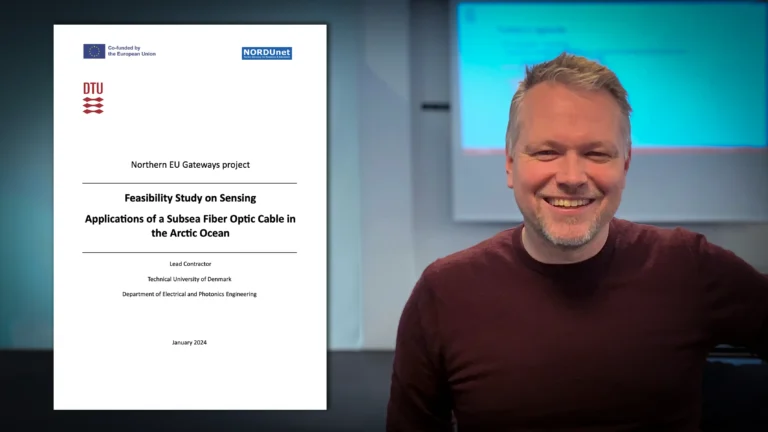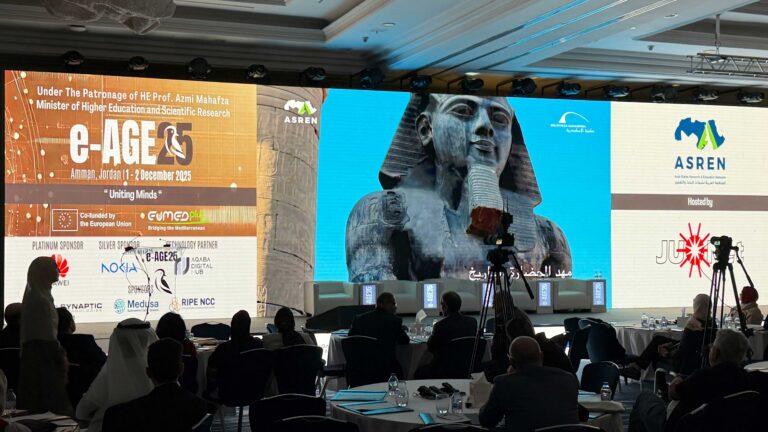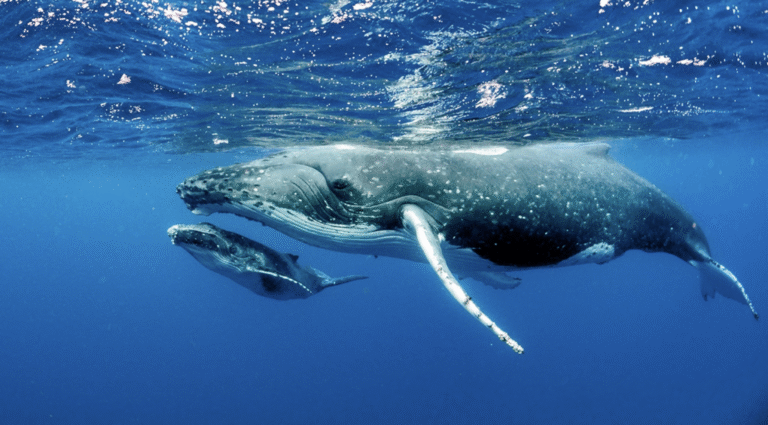With state-of-the-art fibre sensing technology, the two cables proposed to connect Northern Europe to Asia and North America will contribute to science and even warn against potential threats to the cable itself.
Not only will Arctic subsea connections strengthen European digital sovereignty. Thanks to recent progress in fibre sensing technology, such new subsea cables will become more resilient than existing infrastructure. This is the key message of a study from DTU (Technical University of Denmark).
“The importance of maintaining uninterrupted connectivity has never been higher. It therefore seems to be a strong selling point for the new Arctic [submarine cable] connections that they will be able to provide early warning in case of a threat to the cable itself,” says Associate Professor Henrik Wessing, DTU Electro.
Entitled Feasibility Study on Sensing Cable Technologies – Applications of a Subsea Fiber Optic Cable in the Arctic Ocean, the report contributes to the “Northern EU Gateways” project[1].
Given the actual tensions in the world, intentional disruption is a very real concern. But also, natural causes such as sea bottom movements pose a risk to a subsea cable, just like human activities such as fishing and anchoring.
“If for instance a fishing trawler is approaching while towing its gear, sensing capabilities on the subsea cable will allow the cable operator to react in time, contact the vessel and have it change its course,” explains Henrik Wessing.
Obtaining information at modest costs
Currently, the Nordic NRENs, NORDUnet, and international partners are engaged in two subsea fibre cable projects aiming to connect Europe to Asia through Arctic waters. The Far North Fiber is intended to link Europe and Japan through the North-West Passage between Greenland and Northern Canada, while Polar Connect is to follow a more direct route, passing under the North Pole ice cap, towards North America and East Asia.
The cost of adding sensing to the cable connection will depend on the choice of sensing solution, notes Wessing:
“Just by monitoring subtle changes in the continuous optical data flow, it will be possible to detect many events in the proximity of the cable, such as seismic disturbances. This can be done practically with no additional cost. However, this alert will only tell you that something is happening but not where along the cable. To obtain this information, you will need to invest in additional sensing equipment. Still, costs will remain modest when considering the total project costs.”
Scarcity of continuous monitoring in the Arctic
Fibre sensing technologies can serve many applications beyond protection of the cable itself. Due to the harsh conditions and associated high costs, scientific monitoring of the Arctic region is scarce. Therefore, scientists from a range of disciplines are hoping for the two connections to be equipped with sensors. Subsea cables are ideal platforms for sensors that contribute to Research and Artic Ocean explorations. Scientific fields which can benefit strongly from Arctic region sensing data include geology, seismology, oceanography, marine biology, and climate research.
“A full scientific sensor solution will mean more than just marginally increased costs. This is because sensors will need power supply, and transmission of their data will take more powerful repeaters, and finally a fiber pair must be dedicated to this purpose,” Wessing comments.
These costs should be seen as an investment in obtaining a wealth of scientific data which would otherwise be out of reach, says Wessing:
“For instance, oceanographers and climate researchers want data for water temperatures, salinity etc. Today, such data are mainly obtained by operating buoys. This is an expensive solution and will typically only give data for limited periods. Subsea cables with dedicated sensors will provide continuous data and thereby take Arctic research to an entirely new level.”
Combining cable sensors and buoys
During the sensing technologies feasibility study, the Nordic NRENs, NORDUnet, and DTU have engaged with Arctic research communities. The dialogue has revealed a consistent desire for continuous measurements of salinity, pressure, velocity and temperature throughout the water column and several other new types of sensing.
Exciting possibilities lie in the future, according to Henrik Wessing:
“For oceanographers and related disciplines, the optimal would be a combination of cable-based sensors and buoys. While the sensors cover a large distance along the sea floor and have access to power supply through the cable, buoys can be developed into underwater autonomous vehicles (UAVs) able to move vertically, thereby collecting data for the entire water column. Furthermore, the subsea cables could be equipped with docking stations allowing UAVs to recharge and transmit their data to scientists at home. Thereby, the UAVs would be able to function autonomously for several years. That would be a dream scenario.”
Sensing in Research and Education Networks
For research and education networks, fibre sensing is a high-value proposition, as it turns infrastructure into a scientific instrument, says Ieva Muraškienė, project lead for NORDUnet’s Polar Connect initiative. She further explains that polar cables offer independent, diverse, and shorter routes between Europe and Asia; all important elements of global research and education networking. If sensing can be added, the network will also extend a unique resource to research communities. Fibre sensing is therefore a key elements in the effort of NORDUnet and the Nordic NRENs in establishing connectivity across the polar area.
The report “Feasibility Study on Sensing – applications of a Subsea Fiber Optic Cable in the Arctic Ocean” is available here The report is a deliverable of the Northern EU Gateways project, co-funded by the EU under Connecting Europe Facility (CEF) programme.
Two sensing technologies are highly relevant in the Arctic
Fibre sensing technology is a rapidly evolving field with many concepts in play of which some are mature, and others are under development. According to the feasibility study from DTU, especially two concepts are relevant for the Arctic subsea connections.
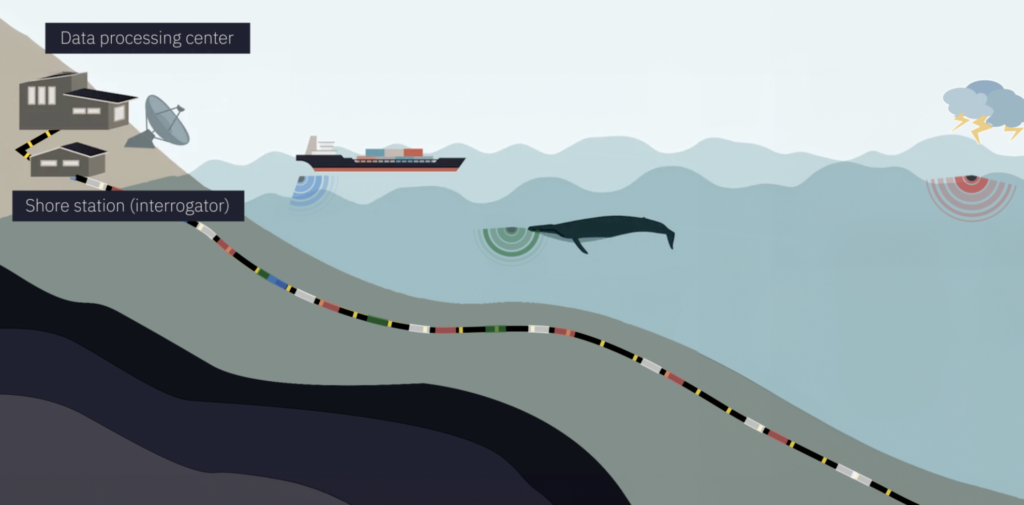
Distributed Acoustic Sensing (DAS) is a technology reminiscent of a one-dimensional radar. An optical pulse is launched into the end of the fiber, and the backscattering taking place at the different points through the fiber is measured. Sounds in the vicinity of a subsea cable – whales singing, the engine of a vessel, seismic noise, etc. – will make the cable vibrate, and the vibrations translate into strain in the fiber which can be detected. In its original form, DAS can only be applied for the first segment of a subsea cable, meaning until the first optical repeater. This will typically be the first about 150 km. However, development is ongoing for so-called repeatered DAS that will allow use of the concept over longer distances.

SMART (Science Monitoring And Reliable Telecommunications) is a fiber communication link with integrated sensors, such as the Climate Change Nodes (CC Nodes) product from Alcatel Subsea Networks. The CC Nodes are point sensors integrated into the submarine fiber cable. In SMART, a dedicated fiber pair is necessary, separated from the telecom fibers. Relative to DAS, the SMART concept is more expensive, but on the upside provides high sensitivity, and therefore more accurate measurements. For example, monitoring of sea level rise and sea bottom temperatures requires high accuracy. Since 2012, a United Nations task force has promoted the SMART concept, leading to development of best practices. Worldwide, a handful of projects are trying out different types of SMART implementation. Their efforts have been successful; this year the contract for the world’s first SMART cable system, called TAMTAM, was signed. TAMTAM will connect Vanuatu and New Caledonia.
Both repeatered DAS and SMART technologies are feasible for the upcoming Arctic connections, according to the DTU report:
“Applications for DAS and SMART, encompassing both existing and anticipated requests from Arctic scientists, underscore their relevance in monitoring whales, earthquakes, ocean currents, sea temperature, and sea level rise. The (routes) traverse unexplored, scientifically significant areas in seismology, oceanography, and marine biology, addressing the scarcity of data in the Arctic.”





